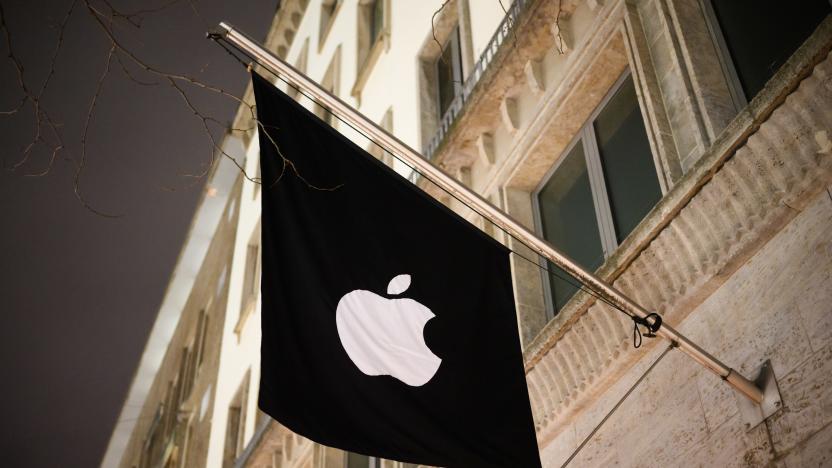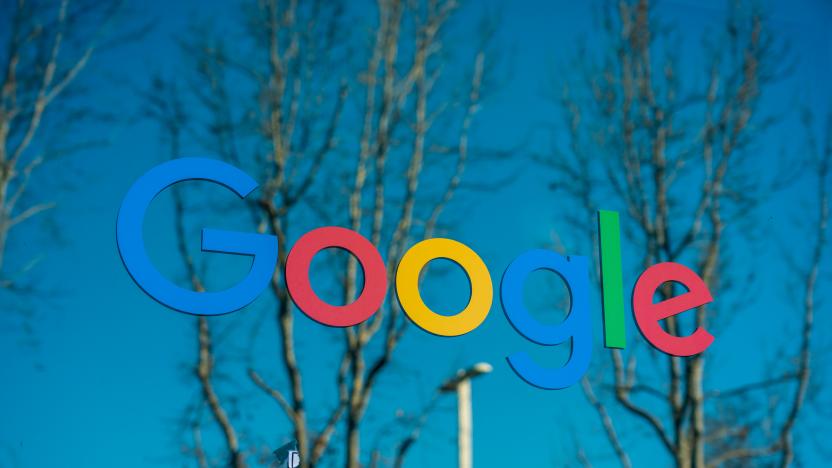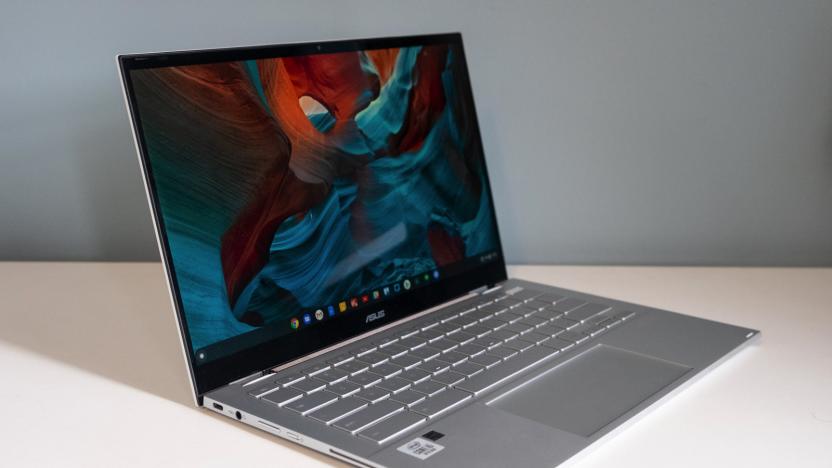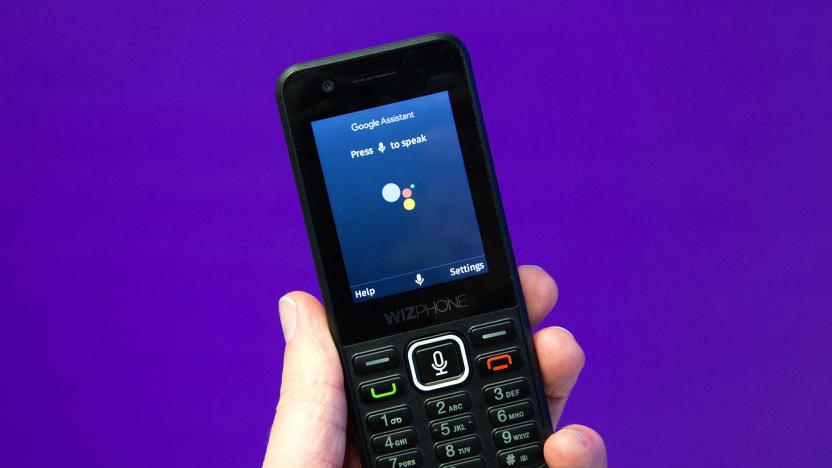web apps
Latest

Apple confirms home screen web apps will no longer work on European iOS devices
Apple has confirmed that it's deliberately disabling progressive web apps (PWAs) in the EU, it wrote in updated developer notes.

Google's 2020 web developer summit puts security at the top of the agenda
It may not be in person this year, but Google is holding its annual Chrome Dev Summit, starting a 12:30PM ET keynote that kicks off two days of virtual sessions and workshops. Just before things kick off, Google has dropped a preview of what it’ll be focusing on the next two days. For those not familiar with the Chrome Dev Summit, it’s not specifically about the Chrome browser or Chrome OS — it’s about the web as a broad platform, regardless of what browser you use.

Google is making it easier to create apps using Chromebooks
ChromeOS.dev has resources for web, Android and Linux development.

Chrome web apps will soon tout desktop-like speed
If web apps are going to truly replace native apps, they'll need the near-instantaneous responsiveness of desktop apps. That appears to be on the horizon, thankfully. Google is unveiling Chrome tools that will help web apps run as quickly as their native counterparts, not to mention make them more usable offline. A newly introduce Web Bundles framework will let developers distribute fast-loading web apps through "any format," including USB drives -- you wouldn't even need to be online to start using an app. Background syncing and context indexing, meanwhile, will let apps "proactively" cache data to make sure it's quickly available whether or not you're connected.

How KaiOS claimed the third-place mobile crown
In December 2015, Mozilla announced it would be abandoning Firefox OS as a smartphone platform. Many assumed the company's withdrawal would kill any hope of a mobile operating system built around the open web, rather than a combination of native apps and tightly-controlled storefronts. In the last few years, plenty of "alternative" smartphone platforms, including Ubuntu Touch and Windows 10 Mobile, have faded into obscurity, too. Jolla has struggled on with Sailfish OS, but it's never felt like a true challenger to the Android and iOS duopoly. Three years later, a surprising competitor has emerged: KaiOS. The relative newcomer, which makes feature phones smarter, is already running on more than 80 million devices worldwide. How did it grow so big, so quickly? With a little help from Firefox OS.

Google Drive apps reach the Chrome Web Store and Chrome OS for quicker web work
It's a long overdue match, really -- if the Google Drive productivity suite is considered the centerpiece of Google's web app catalog, and the Chrome Web Store is the catalog, why weren't the two combined? Google has seen the light by turning Docs (text), Sheets (spreadsheets) and Slides (presentations) into neatly packaged web apps that can be installed through the Chrome browser. New Chromebook owners won't even have to go that far, as the trio will surface automatically in the Chrome OS app list over the next few weeks. The web app bundles might be simple, but they could be tremendous helps for anyone who wants to punch out a few quick edits while on the road.

Mozilla opens Firefox Marketplace for Aurora builds of Android, gives mobile a taste of web apps
Mozilla's love of web apps is more than obvious; we just haven't had a real chance to try the Firefox Marketplace that represents a large part of the company's app strategy. The doors are at last open for a peek, although Mozilla has chosen the unusual path of giving mobile users the first crack: Android users willing to live on the bleeding edge of an Aurora build of Firefox can browse and run those web apps in Mozilla's store. Everyone else willing to venture into the Marketplace will have to wait until their own Firefox builds receive a matching update, including that rare group with access to Firefox OS. We're not quite in a rush to try a first wave of apps in an alpha-grade browser. Should you be the sort who thinks that even beta releases are too sluggish, however, your gateway to the Marketplace awaits at the source links.

Jolicloud Open Platform arrives, lets developers put most any cloud service into one hub
Jolicloud has portrayed itself as a sort of one-stop shop for cloud services and web apps, where a single sign-in keeps us on top of everything. It's mostly been limited to big-league content as a result, but that's changing with the new Jolicloud Open Platform. Developers now just have to build JavaScript-based Node.js components that hook their own apps, media and storage into the same central Jolicloud repository we'd use to manage Instagram and Tumblr. More details and full documentation are forthcoming, although the "open" in Open Platform leads us to think there won't be many technical (or financial) barriers to entry.

Firefox 16 final launches with Reader on Android, VoiceOver on Macs and web app support
Mozilla knows how to keep on the fast track. Just weeks after the Firefox 16 beta first showed, the finished version is ready and waiting. Surprises are few if you were an early adopter, although the update still has some welcome changes for the right audiences. Mozilla is most keen to talk about preliminary web app support for the Mozilla Marketplace, but you'll also find device-specific additions like a Reader Mode for the Android flock and VoiceOver support automatically switched on for Macs. More responsive JavaScript and on-by-default Opus audio playback give existing surfers extra reasons to upgrade. Firefox 16 is immediately available through all the usual channels, so hit the relevant source link if you're ready to live on the not-quite-bleeding edge.

Evernote web interface updated with better sharing, cleaner look
We're huge fans of Evernote here at the Engadget compound (it's great for keeping track of our latest world domination schemes). But, we've got to admit, the web service is clearly the company's red-headed step child. The desktop and mobile apps are undeniably top-notch, but the webapp is just sort of there. Being able to edit your notes and share them from any browser is a great feature, but we wouldn't exactly call it an enjoyable experience. Today the company took the wraps off a revamp that should ease the pain a bit. Evernote is particularly proud of its new shared note design, that offers a much more attractive and interactive look at entries. You can reshare notes, enter a slideshow view or copy it to your own account. The broader redesign is subtle, but refreshing. There are new icons, some color changes and a tweaked top bar that lend a less cluttered feel without removing functionality. There's even a handy button that collapses the sidebar for those of you rocking smaller laptop screens. We also noticed that the new interface seems to load notes with multiple images much faster. You can read about it straight from the horses mouth at the source or just go to the Evernote homepage and check it out yourself.

Google optimizes Flight Search for tablets, makes booking trips easier
It feels like it was only yesterday that we were praising Google for giving us access to a plethora of handy, everyday tools -- oh wait, it was yesterday. At any rate, today the folks from Mountain View are back with more travel-friendly software for you to enjoy, announcing that its useful Flight Search service is now fully-optimized for use with, as Google points out, tablets such as its own Nexus 7 and, naturally, Cupertino's iPad. Jet-setters can see the changes now by simply hitting the Flights link below, and with the dearest holidays just around the corner, now is probably a good time to make use of that "lowest fare" tool.

Google releases new Java to iOS source code translator
Developers have their work cut out. Even if we (impolitely) sidestep the likes of Windows Phone, BlackBerry and the rest, those coders often have to pitch their work across web, iOS and Android. Google's trying to make that job a little easier, introducing a new tool that automatically converts Java source code into Objective-C, which is used in iPad and iPhone apps. While the J2ObjC tool can't tackle the UI for these, it does allow developers to craft other parts (including data access and nuts-and-bolts programming) into an easily shareable code without editing. Some existing Google projects already utilize the new translator, but its results remains a little temperamental -- the tool hasn't translated all possible paths just yet, and many Java devs have, according to the project page, "a slightly different way of using Java."

Firefox 16 beta arrives with web app hooks, Reader Mode for Android and VoiceOver for Macs
Firefox 15 is barely fresh off the vine, and we're already looking at a beta version 16 for both desktop platforms and Android. Mozilla's test release builds in the first support for web apps that play nicely with the Mozilla Marketplace; as long as titles have a slight amount of extra formatting, they can slot into Firefox without hiccups. More treats exist if you're running certain platforms: the Android crowd receives a Safari-style Reader Mode that strips out the fluff from pages, while Mac users see the once test-only VoiceOver support flipped on by default to improve accessibility. Even developers get a little something special through a quick-access toolbar and more readily accessible CSS4 scripting. If any of this sounds tempting, there's a pair of source links waiting for your attention.

Grooveshark back in Google Play after piracy hullabaloo
Grooveshark is no stranger to controversy, but after it was sued by major music labels, Google decided it'd had enough and pulled the app last year. But the streaming service said it's never allowed free downloading, claiming other apps using its name without permission were permitting the piracy instead. The faux-Grooveshark offenders were booted with Google's help, and the app has subsequently been re-stocked on Play's virtual shelves. Meanwhile, the company has paid its debt to EMI, and could even be the target of an acquisition, according to CNET. So, if you want to share the news with your pals (along with some tunes), hit the source below.

Wireless Sensor Tags alert you to movement and temperature changes, fit on your keyring
There's plenty of sensor gear around for hobbyists to play with, but not so many polished products for the monitoring-obsessed. Cao Gadgets is attempting to fill that niche with its functionally named Wireless Sensor Tags -- small devices which monitor movement and temperature, notifying you if anything's amiss. A magnetometer registers movement by changes in its orientation, and can inform you of door openings or similar disturbances, while the temperature triggers are based on upper or lower thresholds. The $15 sensors (or $12 if you want three or more) have a battery life that should last several years depending on their setup, but there is one catch -- you also need the Tag Manager hub ($50), which plugs into your router via Ethernet. It keeps in frequent contact with any subordinates in its 200-foot range, and if after several attempts it finds one MIA, a warning can be sent in case any of your home guards have walked or fallen asleep. The tags also have inbuilt beepers which can be pinged to track down any rogue possessions they're partnered with, like your keys. A lot of thought has been put into micromanaging the tags, which are customizable through web-based, Android or iOS apps, and will send out alerts via email, Twitter, or push notifications on slates and phones (text-to-speech is available if you're too lazy to read). If you're into your data, you can also access trigger statistics from the software, complete with graphs. The home monitoring kit is available now, and instead of crashing your browser with too many embeds, we've decided to point you to the source below for the half-dozen demo vids.

Chrome OS update revamps app list and Google Drive saves, allows relentlessly adorable wallpapers
Aw, wouldn't you look at the cute little... wait. Right, there's a Chrome OS update. At its heart, the upgrade to Google's cloud-based platform introduces a streamlined app list that both occupies less space and carries an internet-wide search box. It's also possible to save files directly to Google Drive, and audio can now play through either HDMI or USB. Don't lie to yourself, however: the real reason you'll rush to update your Chromebook today is newly added support for custom wallpapers, which guarantees all-day, everyday viewing of your most favorite dog in the whole wide world. Or at least, a nice change of pace from Google's run-of-the-mill backdrops. Isn't it so sweet?

Office Web Apps integrate touch support on iPad and Windows 8, brace us for an Office 2013 world
Touch-friendliness is a centerpiece for the upcoming Office 2013, but don't fret if you prefer to live in the world of Office Web Apps ahead of time. As of new preview versions of both OWA and Office 365, those using at least an iPad or Windows 8 will see larger, more finger-ready controls by default. The switch also tweaks the text selection, contextual menus and numerous other elements to work properly with the fleshier input, even going so far as to support multi-touch gestures like pinching to zoom. Windows users get a Touch Mode toggle if they'd rather flip back to traditional control methods. While the web support is still experimental and doesn't have a completion date on the horizon, those willing to live ever so slightly on the edge can stay hooked on Excel, PowerPoint, OneNote and Word without having to use anything so archaic as a mouse and keyboard. [Thanks, Suraj]

Pulse Reader launches browser-based app, you'll need IE 10 for certain gestures
Until now, if you've wanted to use the Pulse reader app for browsing Engadget your favorite blogs you had to own an Android or iOS device. Now, though, the startup is launching a browser-based version of the service, making it accessible on desktops and mobile platforms for which there's no standalone Pulse app. The site will run in any browser, including mobile ones, but there are certain gestures you'll only be able to pull off in IE10, like using two fingers to expose the reading pane. For that reason, Microsoft is promoting this announcement almost as enthusiastically as Pulse (see the source link below if you don't believe us). As for the new website, we could go on about the slick UI and brisk performance, but it's probably easier if you just check out the screenshots below and then peek the quickie demo video after the break.%Gallery-162029%

Kno starts offering K-12 textbooks on tablets, scores industry-first deal with Houghton Mifflin Harcourt (update: not as exclusive)
Kno's tablet textbooks have only ever been available to the college crowd; the younger among us have typically had to get a comprehensive digital education from either the tablet maker's own solution, like Apple's iBooks 2, or less-than-integrated options. A new deal for K-12 books is giving the students, if not necessarily the teachers, a fresh alternative. Parents can now rent books for home studying at prices under $10 per title. They're not state-specific books, but their Common Core roots will keep learners on the same (virtual) page as classmates while adding Kno's usual 3D, links, notes and videos. Just to sweeten the pot further, Kno says its current catalog centers around a pact with Houghton Mifflin Harcourt -- a publisher that hasn't offered K-12 books on any tablet platform until now, according to Kno. The initial focus is on iPad, web and Windows 7 readers, although Android-loving parents looking for that at-home edge will have to wait until sometime "soon" to leap in. Update: Although we were told otherwise at first, it's not true that Houghton Mifflin Harcourt has never offered K-12 books on a tablet before: we've since learned that the publisher posted Social Studies textbooks for the iPad in May. The Kno deal is still significant as a rare cross-platform offering. %Gallery-161862%

Verizon adds Office 365 to Small Business Essentials, gives small businesses more mobile productivity tools
Fresh off unveiling Office 365's cloud app model last month, Microsoft has teamed up with Verizon to add the productivity suite to Big Red's Small Business Essentials service. Similar to the Governmental version of Office 365, small businesses can gain access to Office web apps, SharePoint website design tools, Exchange email and calendar service, plus Lync messaging. Best part is, it's just six bucks a month per user, and most all enterprise customers are taken care of: the tools are available on Android, BlackBerry, iOS and Windows Phone. Want to know more? PR awaits after the break.










